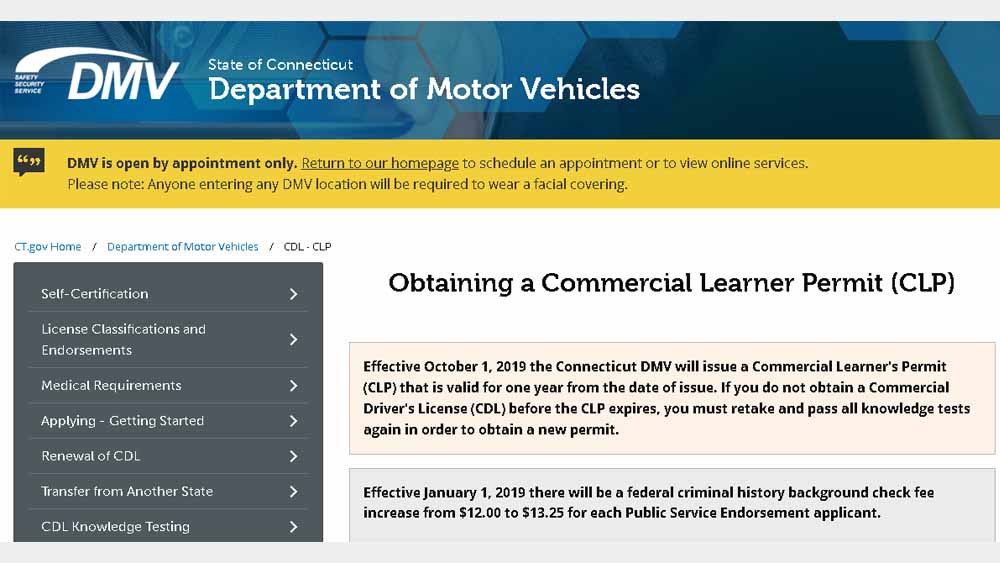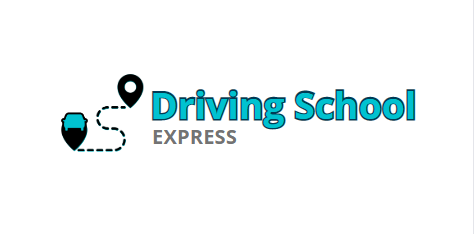Like most states, Connecticut divides driver’s licenses into different categories based on several factors.
The amount of experience required, the intended use of the vehicle, and commercial vs non-commercial use can all result in different license classifications.
All that can make it really confusing.
We’re here to help.
In this article, we’ll take you through a complete guide to the Connecticut driver’s license classifications. We’ve gone into the specifications, requirements, and procedures.
So whether you’re looking to drive a commercial truck or just want to drive your family car, you’ll find the information on the type of license you need.
Let’s get straight into it.
What are the Driver’s License Classifications in Connecticut?
Connecticut issues 5 driver’s license classifications. These are:
- Class A
- Class B
- Class C
- Class M
- Class D
Let’s take a look at each one.
Class A
The Class A license is a Commercial Driving License (CDL) that allows you to drive a combination of different vehicles that have a gross vehicle weight rating (GVWR) of 26,001 or more. The vehicle/trailer they are towing should weigh above 10,000 GVWR.
Vehicles that fall into this class include large trucks carrying heavy cargo, tractor-trailers, etc…
Now, Class A licenses are the most difficult to get, but with it, you’ll also be permitted to drive vehicles falling under both the Class B and C categories.
Class B
Class B is another CDL that allows the license holder to drive vehicles that weigh above 26,000 GVWR. Towing capacity should be less than 10,000 GVWR.
There are 2 distinguishing features between classes A and B.
For one, Class B has a lower towing weight limit (it should be less than 10,000 GVWR, while Class A should be above 10,000 GVWR).
The other difference is that, while Class A is a combination of vehicles (such as a tractor-trailer), Class B is only a single vehicle (such as a cement mixer, garbage truck, dump trucks, etc...).
Holders of a Class B license are also permitted to drive vehicles falling under the Class C category (if all endorsement requirements are met).
Class C
A Class C license is yet another CDL license. This time, this permits the license holder to drive vehicles that weigh less than 26,001 GVWR and tow less than 10,000 GVWR.
An example of a Class C vehicle is a school bus.
Class M
The license class M is required if you want to drive a 2 or 3 wheeled motorcycle in Connecticut. Take note that this license is not required for mopeds/motor-driven cycles that produce less than 5 horsepower (HP).
A class M license can only be gained after you’ve obtained a Class D driver’s license.
Class D
The Class D license, otherwise known as a non-commercial license, allows the holder to drive any vehicle that does not fall into the other categories mentioned above. This is often the only license most people get.
Common vehicles included in this category are SUVs, Hatchbacks, Sedans, etc...
Moreover, mopeds can also be driven with a Class D license.
What are the License Classification Requirements in Connecticut?
In this section, we’ll go over the licensing requirements for each license classification in Connecticut.
CDL License (Class A,B,C)
For these, you’ll need:
- A valid Connecticut issued driver's license
- To be at least 18 years old*
- To show acceptable legal presence and identification
- A current DOT medical card
- A social security number
- To pass the commercial driver skills and knowledge test
- To complete medical certification requirements
- To pay the applicable fees
*Drivers involved in the transportation of hazardous waste must be at least 21 years of age.
The CDL license requirements may vary based on the vehicles you are using and the goods being transported.
Moreover, certain vehicles may have endorsement requirements that are needed before the vehicle is legally allowed on the road.
Let’s give you a few examples.
S endorsement is required on school buses transporting students to and from school and education events. A placard must be placed with the letter ‘S’ to clearly distinguish the bus as a school bus.
X or H endorsements are required for the transportation of hazardous material. Again, the vehicle must be clearly distinguished.
P endorsement is required to be added to your CDL if you intend to transport more than 16 passengers, given that the activity does not fall into the school bus category.
For more endorsement information, check out the CT DMV’s website.
Motorcycle License (Class M)
For a Class M license, you need:
- To possess a valid driver’s license
- To be at least 16 years old*
- To complete the non-commercial license application
- To show acceptable legal presence and identification
- To pass the motorcycle written exam and skill tests
- To obtain M endorsement
*Under 18 license aspirants must submit a certificate of parental consent.
Non-Commercial License (Class D)
For 16 and 17-year-olds, the requirements are:
- Complete an 8-hour safe driving course
- Pass the written test to obtain a driving permit
- Complete 8 hours of behind the wheel training
- Pass the final driving test
For adult drivers aged 18 and above, the requirements are the same. Except, this time, they have to complete an 8-hour ADULT safe driving course.
What are the Licensing Procedures for Each Classification in Connecticut?
Here, we’ll look into the actual procedures for obtaining each driver’s license classification.
CDL Licensing (Class A,B,C)
To apply for a CDL, you’ll first have to register through the DMV’s online portal. You have to provide your social security number and other required documents.
After approval, you then have to take a knowledge-based test to gain a permit. To pass, you have to score a minimum of 40/50.
Testing requirements will vary based on the vehicle you intend to drive and the contents it is carrying. For more information on individual endorsement testing, consult the DMV website.

Once you complete the test and get sufficient training, the last step is to complete a skills-based test. This will determine your vehicle maintenance knowledge and actual driving ability.
Motorcycle License (Class M)
To gain a Class M license, you must have a Class D license beforehand. Individuals aged under 18 will also need to submit a parental consent form.
These documents must be submitted when you go to your DMV for the written and physical examination.
Once you pass those, you then need to take the novice motorcycle training course. This will include both knowledge-based and practical skills that you’ll need to drive a bike.
Upon gaining a completion certificate, you’ll have to go to the DMV to get the M endorsement that will allow you to drive legally on the road.
Non-Commercial License (Class D)
A non-commercial license will require minors to complete an 8-hour safe driver education course from an approved Connecticut driving school. For adults, the course they take should be directed specifically to adults.
After completing the course, you’ll have to pass a written and physical examination at your local DMV to obtain a driving permit.
Having obtained a driving permit and finishing your 8 hours of behind-the-wheel training, you can finally take the driving test to obtain a Class D license.
Conclusion
So there you have it, a complete list of all the different license classifications, requirements, and licensing procedures in Connecticut.
Just note that gaining a commercial license is significantly more complex than the other categories listed above, with varying requirements based on the weight and nature of the activity you wish to carry out.
So be sure to check with the Connecticut DMV to ensure you know the specific requirements of your commercial license.
Aside from that, it’s pretty easy and straightforward to get a Class D or Class M license.
Good luck with getting licensed!
